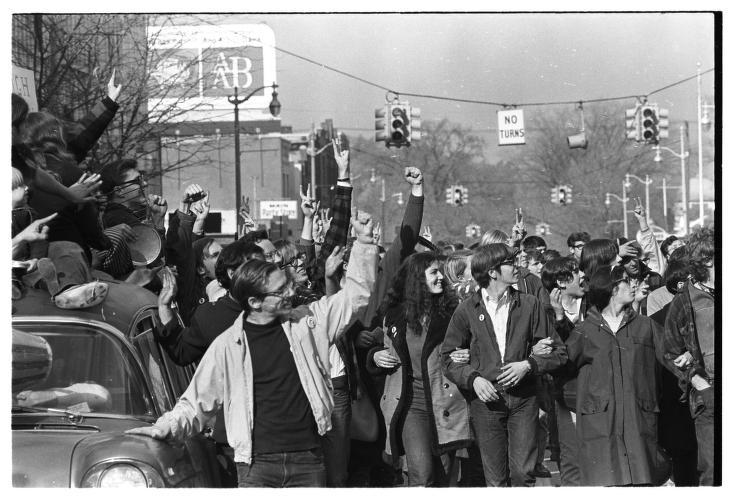Resisting the Vietnam War
By the summer of 1965, young Americans across the country began to change focus in their fight against the Vietnam War. After the campus teach-ins, the National Teach-in, and the March on Washington, young people in the anti-war movement understood why the Vietnam War was illogical and ineffective, and therefore started protesting against the immorality of them being forced to fight in the war they opposed. The anti-war activists began objecting to the Vietnam War by resisting the draft, which was cemented in the minds of young, American males who were eligible to go to war. To many, the draft was a death sentence. It meant being sent to a war and fighting for a cause that many people did not believe in. Ironically, as the draft continued to fuel the war effort, it also grew the anti-war cause.
In almost every major city in the nation, an anti-draft protest took place. Draft cards were burned, Selective Service buildings were protested, and teach-ins and sit-ins were continual events. At the University of Michigan, anti-war activists participated in the International Days of Protest by conducting a sit-in at the Selective Service building in Ann Arbor, which ended with thirty-nine students, professors, and activists being arrested. Several teach-ins occurred as well as multiple events where draft cards were burned. The student activists at the University of Michigan found themselves in a difficult and paradoxical position in which their university was a determiner in their likelihood of being drafted, as well as a place for them to voice their opposition to the draft.

